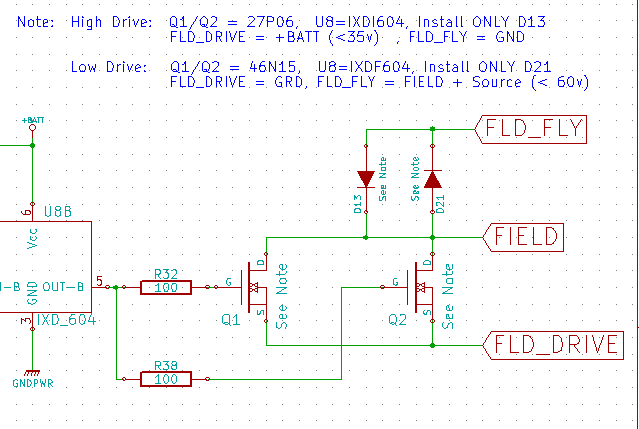And then there is the point that using High drive means the Field voltage needs to be lock stepped with the controller voltage. (without some really wild effort). And more so, many of the FET drivers are limited to a 24v system. So, there is a REALLY good reason for doing low drive.
.. Except the rest of the world is high drive.
So, I have been playing with the possibility of doing a You Pick Drive, w/o using different PCBs and major solder jumpers. And I think I have it. By careful layout of the PCB, and selective part stuffing / choice I think we can have a configurable High or Low Drive. All one needs is an extra connector pin, and then a N or P FET is chosen at build time (Plus the driver version, and where to put the snubber diode). Here is what I have:
When stuffing the PCB U8, Q1, Q2 and D13/D21 are selected per the note. Then the appropriate voltages are passed into FLD-DRIVE and FLD_FLY.
Here is how it would look configured for High and Low Drive. I did 'CAD' things around a little bit to make each configuration more like what one would expect. But if you follow the traces you will see it is really the same as the one above.
 |
| Configured for High Drive |
 |
| Configured for Low Drive |
What makes this workable is that the P and N FETs keep the same 'pins' for D, G, and S. And it so happens that D always connects to the Field, and S always connect to the voltage that the non-driven end of the Field (the end back on the alternator) is not. I did loose one snubbing diode, but it was rather of an overkill - one only really needs the one across the Field coil, not an extra one across the FET.
OK, so this is how I am going to revise the PCB. Then it is up to the builder - High Drive or Low Drive...

No comments:
Post a Comment